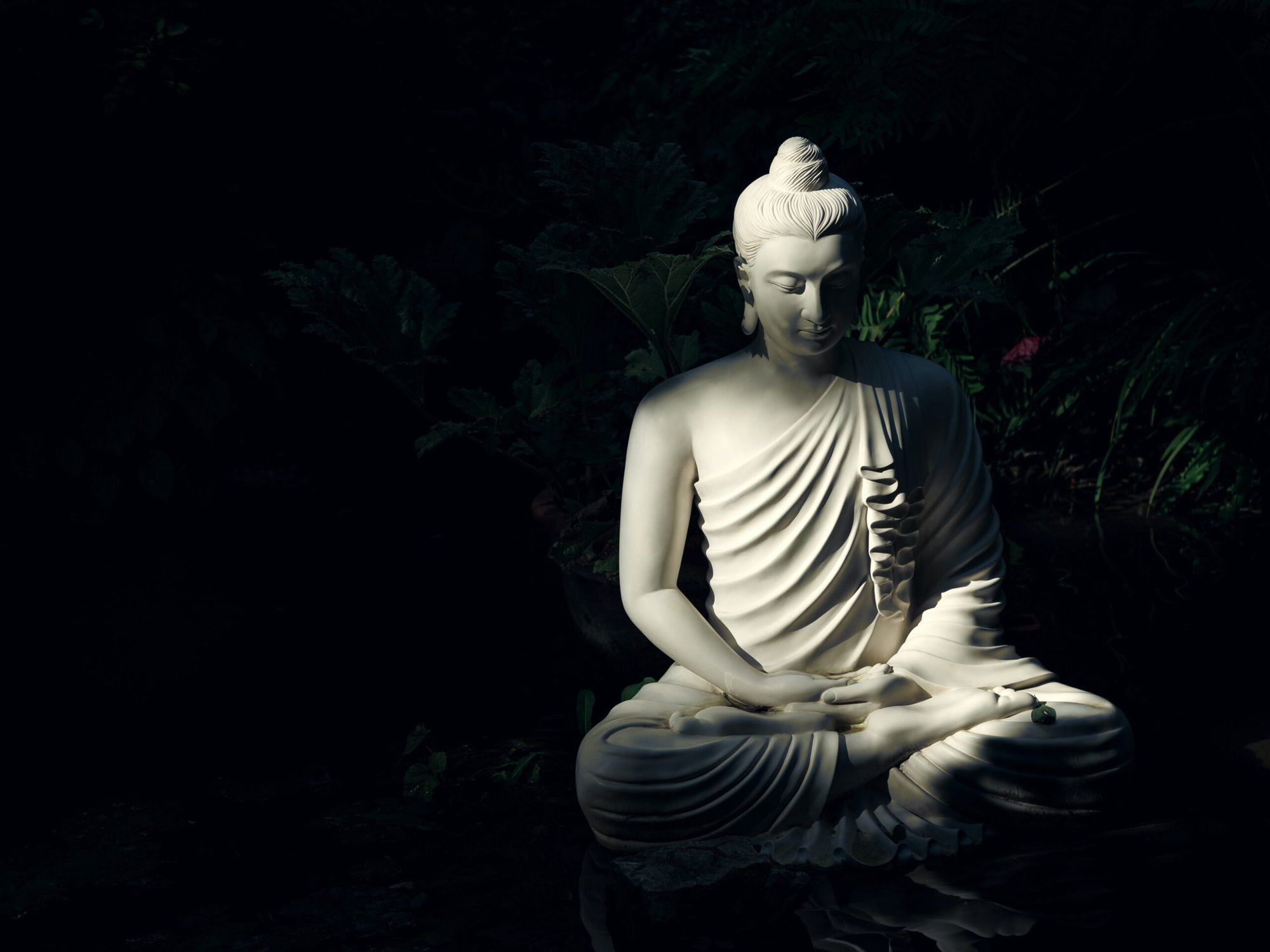Self-care would never have become a thing without an enlightened Buddha. So, mindfulness and Buddha? That fits! But mindfulness and artificial intelligence – how do they go together? Well, they do! That’s why we’re taking a tongue-in-cheek look at young Buddha and seeing what AI can do for our well-being today.
For all the enlightenment…
…even Buddha didn’t know the path to tranquillity. That is, if we are to believe oral tradition and indulge the stories of stressful moments: Buddha may have been privileged enough to be born in his father’s royal palace and spend his life there in prosperity. But he wasn’t allowed to leave the venerable walls. Not even as the prince that he was, curious about his people, instead being imprisoned for years without any contact with the outside world – terribly sad. At 16 he married his cousin, who gave birth to a son: Rahula. But would you call your child “fetter” if everything were hunky-dory, ommm?
And we haven’t even started on the harem Buddha had, which must have comprised up to 60,000 women. The number alone would have even today’s hypermachos and their patriarchal contemporaries sinking deep into a state of impotence. In those days, more than two thousand years ago, Buddha was also known as Siddhartha, meaning “he who has attained his goal”. So finally, he was allowed to leave the palace. He took four trips to see his people and realised that mindfulness was the best way to overcome life’s difficulties. For that reason, he started meditating for 49 days underneath a poplar fig tree. But a demon wanted to distract Buddha from following the path to enlightenment by sending not only his seductive daughters but also evil spirits. Poor Buddha – oh how he suffered.

So many questions spring to mind – life’s way too serious already, right? Would AI have had a positive effect on young Buddha? For example, would he have been able to discuss his feelings better with chatbots and find out more about his state of mind? Would he have been allowed to wear a smart watch on his contemplative little wrist in order to receive biofeedback in real time – 140 over 90, careful young man? And finally, would his poplar tree session have turned out considerably shorter thanks to sophisticated meditation and mindfulness apps because woodland sounds and calming voices ensure demons are sent off to Nirvana?
Meditating for 49 days? Pfft, we don’t have time for that! At least not these days. We live in a state of restlessness between fast forward and slow food, between career pressure and gender inequality, individualism and new family configurations, climate change and international geopolitical status.
And when it all gets too much for us, we take our own trips. But even at our dream holiday destination, we can’t manage to turn off the longing for search engine-optimised and social media-worthy visibility. Dependency. Stress. Attachment. Poor us. At least there would be plenty of artificial intelligence technologies. They can help us to find ourselves again, to be more mindful in how we speak to ourselves, to live in a healthier and more balanced way. Can we manage that? With AI? SurelyWe wish. And then everything would be all Buddha again.

Practise meditation and mindfulness
AI-supported apps like Calm and Headspace offer meditation and mindfulness exercises tailored to the needs and progress of its users. They employ sophisticated analytics processes to combat stress and anxiety and allow for greater self-reflection, peace and calmness.
Pressure is a no-no
AI also has its benefits in the workplace. It analyses patterns of behaviour and helps to identify patterns and triggers of stress. It can also propose exercises for reducing stress in order to increase productivity and promote mental health.
Biofeedback is more than wearable
Wearables are worn directly on the body, like the Apple Smart Watch, smart jewellery or smart clothes with built-in technology. They measure biometric data like blood pressure, blood sugar levels and heart rate in real time and send alerts if they record bad figures. By interacting with AI, they can also recommend tailored relaxation techniques.

Show me some emotion!
Tired, sad, happy? Using image processing algorithms and neuronal networks, AI can recognise faces and emotions, for example based on eyebrow movements, the shape of the mouth and posture. Apps like Kintsugi work with audio journaling: using sentiment analysis of emotions, they check the emotional state of the person trying it and make recommendations such as mindfulness meditation.
Talking from the soul
Speaking about stress and similar problems in order to get strategies to solve the problem? Chatbots like ChatGPT make this possible. But what if brain activity were also carefully transmitted to it: all AI tools need to consider data protection and transparency, plus ethical issues to ensure that AI contributes to people’s well-being. Alternatively, there are still the good old analogue options: finding a quiet place, sitting, closing your eyes – and letting go.
Photocredits: Motoki Tonn, Aleksandr Ledogorov, Jared Rice, Mattia Faloretti







